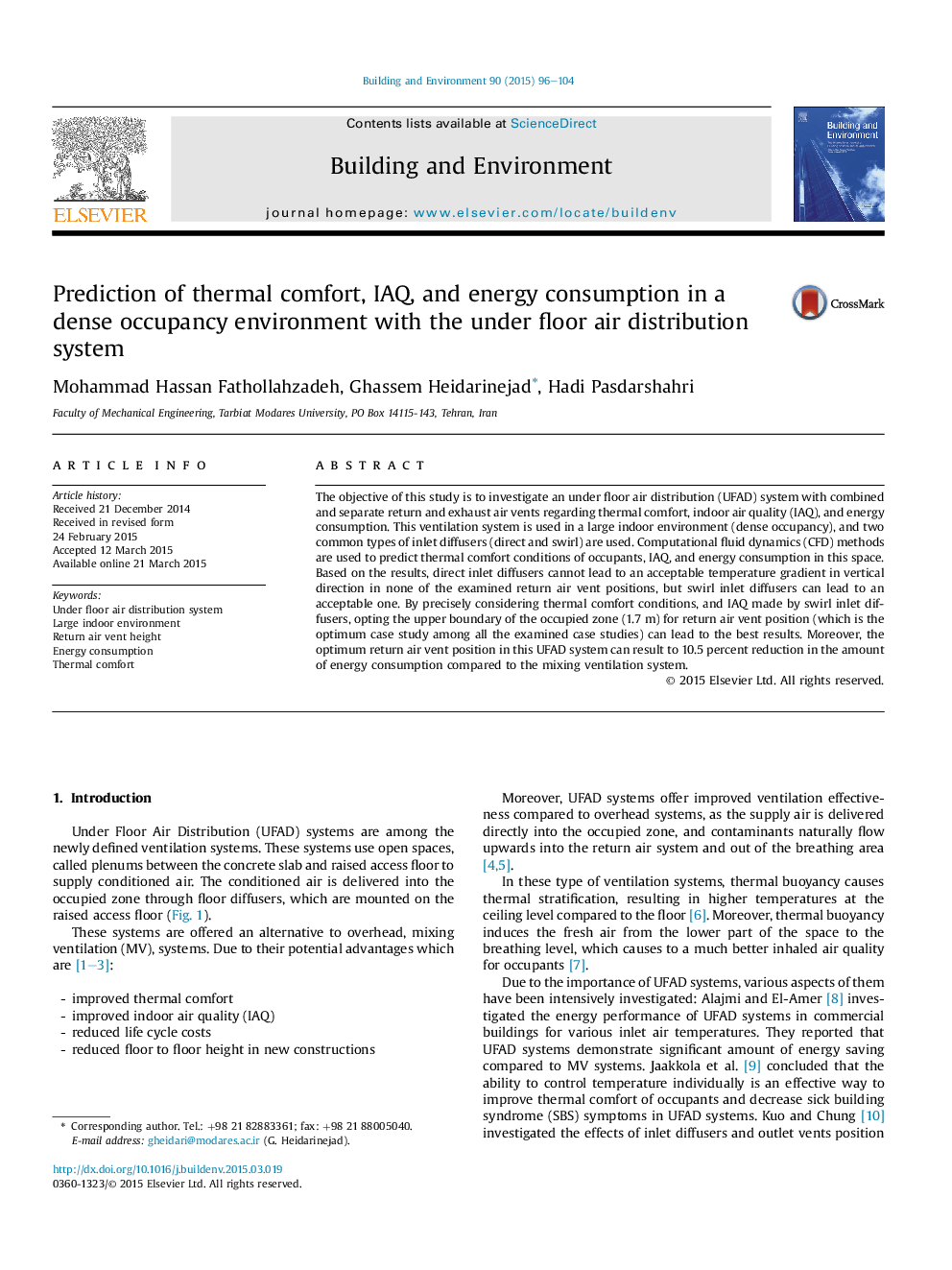| کد مقاله | کد نشریه | سال انتشار | مقاله انگلیسی | نسخه تمام متن |
|---|---|---|---|---|
| 247860 | 502530 | 2015 | 9 صفحه PDF | دانلود رایگان |

• An UFAD system with combined and separate return and exhaust vents is investigated.
• Two common types of inlet diffusers are used in a large indoor environment.
• Opting upper limit of the occupied zone for return vent can lead to the best result.
• Well-designed UFAD systems in dense occupancy environment can meet occupants' needs.
The objective of this study is to investigate an under floor air distribution (UFAD) system with combined and separate return and exhaust air vents regarding thermal comfort, indoor air quality (IAQ), and energy consumption. This ventilation system is used in a large indoor environment (dense occupancy), and two common types of inlet diffusers (direct and swirl) are used. Computational fluid dynamics (CFD) methods are used to predict thermal comfort conditions of occupants, IAQ, and energy consumption in this space. Based on the results, direct inlet diffusers cannot lead to an acceptable temperature gradient in vertical direction in none of the examined return air vent positions, but swirl inlet diffusers can lead to an acceptable one. By precisely considering thermal comfort conditions, and IAQ made by swirl inlet diffusers, opting the upper boundary of the occupied zone (1.7 m) for return air vent position (which is the optimum case study among all the examined case studies) can lead to the best results. Moreover, the optimum return air vent position in this UFAD system can result to 10.5 percent reduction in the amount of energy consumption compared to the mixing ventilation system.
Journal: Building and Environment - Volume 90, August 2015, Pages 96–104